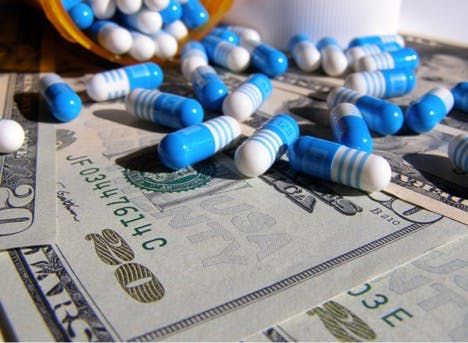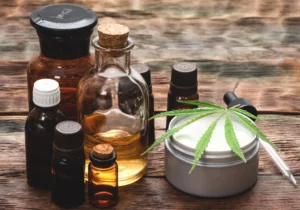The pharmaceutical industry has long been an opponent of cannabis legalization. It’s no surprise, because when people turn to marijuana for medical purposes, they often turn away from pharmaceuticals. But now, as more states remove hurdles for recreational marijuana use, the trend is shifting—with Big Pharma starting to make forays into the cannabis industry.
There are a lot of questions about the drug industry’s apparent about-face regarding cannabis. How is Big Pharma changing its strategies to mainstream manufactured cannabis products? How are synthetic cannabis pharmaceuticals legally hitting the market when marijuana is still illegal federally? How will Big Pharma’s pursuits likely impact local marijuana growers and small cannabis businesses?
You’ll find the answers to these and other questions in the following five trends we see with Big Pharma getting in on the green rush.
FOLLOW US ON FACEBOOK & INSTAGRAM
1. Big Pharma Taps the Global Cannabis Market
Strategic partnerships between cannabis producers and Big Pharma have the potential to expand global access to cannabis. The Canadian cannabis market offers an interesting case study to explore the benefits of collaboration with unlikely allies.
In the first formal agreement of its kind, cannabis licensed producer (LP) Tilray and pharmaceutical giant Canada Sandoz are working together to develop new non-combustible cannabis products. These include gel caps, edibles and sprays—even though they’re not yet legal in Canada. Along with new products, Tilray and other LPs are looking to pharmacies to officially distribute their new cannabis products.
What does all this mean for consumers? It means that cannabis will probably be exported and distributed in more global markets—as a biotech product. In addition, Big Pharma is entering the ring as an industry player, rather than as an opponent—meaning, they’re looking to expand access to cannabis, not thwart it.
Tilray’s Chief Executive Officer Brendan Kennedy thinks this is a good thing. In a recent interview with VICE News, Brendan comments that as Canada builds its reputation as a “safe and reliable source of medical cannabis,” it can use the considerable resources of a global pharmaceutical company to educate medical providers about marijuana. This will in turn make cannabis more accessible to patients around the world.
Or so the thinking goes.
Time will tell if these types of partnerships bring about more education and access, or if they’ll simply lead to more outrageous profits for Big Pharma at the expense of smaller cannabis producers and patients alike.
2. Synthetic Marijuana Qualifies for Schedule 2 & 3 Classifications
Big Pharma’s two-pronged approach to entering the mainstream cannabis market relies on industry partnerships and producing its own cannabis products. This is interesting given Big Pharma’s history in blocking marijuana legalization on the state level.
Let’s not forget what happened in Arizona, when a pharmaceutical company called Insys paid $500,000 to halt a measure that would have legalized recreational marijuana. This happened just as Insys prepared to launch its own drug made with synthetic tetrahydrocannabinol (THC).
So far, the FDA has approved three lab-made, THC-based drugs: Marinol, Syndros and Cesamet, all to help reduce nausea, vomiting and weight loss associated with cancer and HIV/AIDS. These pharmaceutical companies’ products are receiving a Schedule 2 or 3 rating by the U.S. Drug Enforcement Administration (DEA).
This in turn makes it easy for Big Pharma to enter the mainstream drug market with laboratory-produced cannabis—much easier than marijuana producers growing botanical cannabis, which is still classified as a Schedule 1 substance.
3. Marijuana Research & Clinical Trials Take Place Overseas
So, we know that Big Pharma is actively producing synthetic cannabis, and companies are investing millions of dollars in research and development (R&D) to create cannabis-based medicine. According to U.S. Food and Drug Administration (FDA) guidelines, "Study of marijuana in clinical trial settings is needed to assess the safety and effectiveness of marijuana for medical use."
But how is this happening when cannabis is still a Schedule 1 substance? It turns out the clinical trials for these synthetic marijuana drugs aren’t carried out on American soil where federal cannabis prohibition remains firm. Instead, many drug companies are running the first two phases of their cannabis clinical trials in places like Israel.
Israel has policies to support researchers in investigating many aspects of the cannabis plant and its effects on the body. So, some American pharmaceutical companies are starting their R&D process in Israel, then completing phase 3 of their trials in the U.S. for quicker FDA approval.
An early adopter of this trend is GW Pharmaceuticals. This U.K.-U.S. company just received a green light from the FDA for its new epilepsy drug, Epidiolex. If approved by vote in June, it will be the first cannabidiol (CBD)-based pharmaceutical on the market.
4. Big Pharma’s Profits Will Decrease Slightly as Legalized Cannabis Sales Go Up
Once the federal government finally allows medical marijuana to become a legitimate part of the health-care industry, those pharmaceutical companies not invested in cannabis could suffer financial losses. According to a 2016 report using data from the University of Georgia, Medicare prescriptions decreased significantly in states where medical marijuana is legal.
Analysts predict that legal marijuana use for ailments from chronic pain to epileptic seizures to glaucoma may cost Big Pharma about $5 million dollars. However, seeing as the drug industry makes about $425 billion per year, this isn’t going to affect Big Pharma’s bottom line that much.
5. Politicians Recognize Marijuana as Part Solution to the Opioid Crisis
Marijuana is often stigmatized as a “gateway drug” for other more addictive and harmful substances. Yet two-thirds of drug deaths in 2017 were caused by opioids. According to a 2018 Centers for Disease Control & Prevention report, opioid abuse is on the rise in nearly every segment of American society, claiming 115 lives every day.
RELATED: MARIJUANA TAKES ON BIG PHARMA ON THE OPIOID FRONT
Evidence-based research shows that marijuana consumption can help decrease prescription drug use. Cannabis’s healing properties make it a viable alternative to anti-anxiety and antidepressant medication, anti-seizure medication, painkillers and sleeping pills. According to a recent Journal of Health Economics study, “marijuana is a far less addictive substance than opioids and the potential for overdosing is nearly zero.”
Legislators are using federally funded research to take a stand against anti-legalization lobbying groups, including Big Pharma. In response to a question posed to her on “Good Day New York” about marijuana being a gateway drug, Sen. Kirsten Gillibrand (D-NY) said, "I don’t see it as a gateway to opioids. What I see is the opioid industry and the drug companies that manufacture it, some of them in particular, are just trying to sell more drugs that addict patients and addict people across this country.”
It’s time for marijuana’s efficacy as an alternative treatment to further come into the light through federally funded, peer-reviewed research. In order to disrupt the grip of Big Pharma and ultimately decrease opioid addiction, more supportive data and collaboration among physicians, lawmakers and influential players within the cannabis industry are sorely needed. Ironically, it’s the R&D investment and start-up capital from Big Pharma that could help push the ball forward on necessary research.
Will Big Pharma’s Entry Into Cannabis Help or Harm the Industry?
Big Pharma’s presence in cannabis is inevitable (despite its best early attempts to sabotage marijuana businesses to protect their own interests). On the up side, strategic partnerships between cannabis producers and pharmaceutical companies will likely expand access to marijuana-based healing. And while this may produce a marketplace that’s more limited than that of a completely legal whole-plant cannabis market, having these partnerships will also drive innovative research that will hopefully further spur the FDA and DEA to re-evaluate federal laws around cannabis regulation.
As always, there can be major cons when big businesses co-opt production and distribution. One concern is over the quality of synthetic cannabis therapies. Many assert that synthetics aren’t as effective as whole-plant marijuana is. That said, these pharmaceuticals do provide relief for many, especially children suffering from epilepsy and other health conditions.
Another worry is that drug companies will come in and capture the lion’s share of the profits—after all, they have their shareholders’ best interests in mind. This profit motive will put the squeeze on small, local growers who lack the resources that Big Pharma has.
Big Pharma’s involvement in cannabis will be both good and bad for those of us who’ve come to rely on the plant’s many medicinal benefits. Whether the bad will outweigh the good, or vice versa, has yet to be seen.
Photo credit: Chris Potter
If you’re new to cannabis and want to learn more, take a look at our Cannabis 101 post. HelloMD can help you get your medical marijuana recommendation; it’s easy, private and 100% online.






